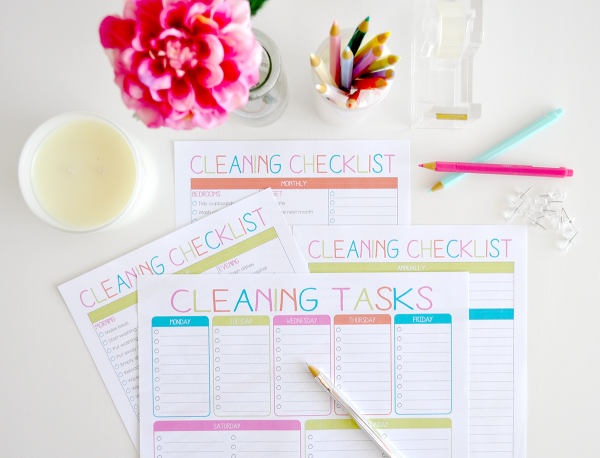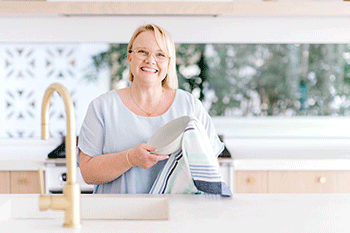
This is a guest post by Eva Van Strijp from Eva Van Strijp
People often ask me if homeschooling is recognised, if it’s legal or if you have to be a teacher in order to homeschool your kids. (The answers are yes, yes and no!)
Parents around the world choose to homeschool their children for a variety of reasons, and whatever reason you choose, there are ways to make it an enjoyable, smooth process.
Sometimes the first concern parents have is that they won’t be able to keep up with everything else that happens in life, once homeschooling becomes the dominant force. Now, there are numerous ways to homeschool and thousands of resources from which to choose, but regardless of the method or the curriculum used, there are some simple processes you can put in place to ensure that you have the time you need to dedicate to it.
If homeschooling is on your radar for 2015, I’ve got some strategies to help. There are five pillars of a smooth transition into homeschooling, whether you’re starting with a six year old, a ten year old or a teen, and I’m going to share them with you today.

Pillar One – Support Network
Once you’ve chosen to start your homeschooling journey, you’ll need to surround yourself with people who will support you in that journey. These options are a great starting point.
Education department
The education department in your state can provide all the information you need regarding registration and curriculum. It also has a list of the resources, financial assistance and services you can access. To find your state department’s website, just Google homeschooling, followed by your state.
Homeschooling community
If your local area has a homeschooling community, it is definitely worth getting in touch with them. Many groups around Australia will organise group activities, excursions and sports. Some groups also run co-operative homeschooling days, where the children get together for group lessons. This can be an amazing way to tap into and share the knowledge in your homeschooling community. The Home Education Association has a list of support contacts on their website.
Family and friends
There will be some family and friends who don’t understand your decision to homeschool, but try not to let it get you down. Instead, spend more time with the family and friends that lift you up and support your journey.
Local resources
Most towns have some amazing resources available for children, and some even cater specifically for homeschoolers. Try to incorporate local attractions into your homeschooling journey. Apart from being an incredible learning tool for your children, it will also help you to make connections and access a wider support network. Local resources can include museums, libraries, sporting facilities, zoos and art galleries.
Book stores
Your local bookstore will also be a really helpful place to visit. Some children respond very well to structured bookwork, so if this is your child, a visit to your local bookstore will reveal most of the curriculum that is used in your local schools. If they don’t have them on the shelf, they should be able to order them in for you. If you’re not sure about your child’s learning style yet, or the approach you want to take in your homeschool, some of these books can be a great place to start.
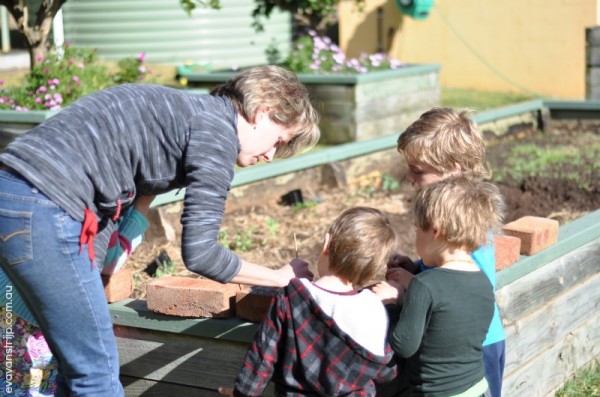
Pillar Two – Confidence
I know it’s hard to avoid mother’s guilt, but really do try to feel confident in your choices. Try not to second-guess the books you’ve bought, or the learning space, or the routine. Just give it a go today, knowing you can change things up tomorrow.
Each child learns differently, so no single approach will work with every one of them and it’s important to give yourself the space and grace to make changes.
Write down your reasons for beginning this homeschool journey and refer to it often. Ask yourself if there are new reasons, or if the reasons have changed. Many parents find that the benefits they expected to see have compounded or changed entirely, and it’s important to acknowledge all the great things that homeschooling allows you to experience.
Create a vision board for how you want your homeschooling journey to feel – words that resonate, images that inspire. Keep your vision board front and centre of your workspace to help motivate you.
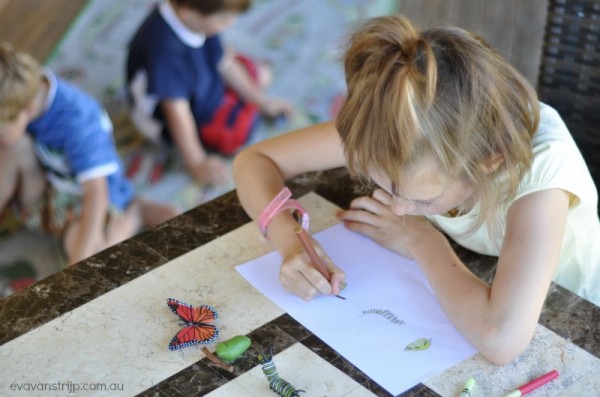
Pillar Three – Team Work
Homeschooling can place extra pressure on the primary caregiver so it is extremely important to get the entire family working together as a team. Some ways to do this can include:
Chore charts
Let the kids choose their chores and rotate weekly or monthly. Use the chore chart as an opportunity to teach your children new skills. If you have a 9 year old on lunch duty each Wednesday, use that time to teach him or her how to cook sausages, boil an egg, make toasties or reheat soup.
Rules
Have rules in place to prevent mess from compounding. Ensure the children know that if they use a game, they need to put it back. If they spread their schoolbooks out all over the lounge room floor, they need to pack them up. If they wear a pair of shoes, they need to put them where they belong.
Systems
Create simple systems for dealing with daily tasks, such as washing. One idea is to hang a wet bag on the end of each child’s bed. They can put their dirty clothes in here and bring it to the laundry on set days. This really helps kids to develop a sense of responsibility for their belongings. If they forget to take it to the laundry, they’ll soon run out of clothes or find their favourite t-shirt missing.
These ideas can all be readily applied in any family. It’s about helping the children to learn responsibility for themselves and getting the whole family working cohesively so that the onus of mess-management doesn’t fall to one person.
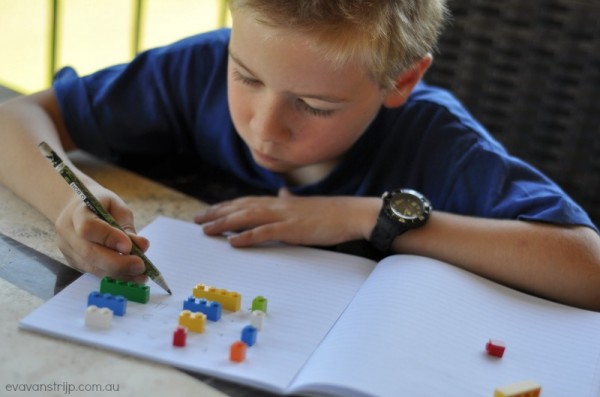
Pillar Four – Organisation
If you’re not an organiser by nature, you might have reached Pillar Four and decided that homeschooling isn’t for you! But don’t worry – it doesn’t have to be onerous, and there are plenty of ideas and resources in this incredible blog to start you off.
The key here is to get organised once and stay that way. We need to be creating systems for success and routines that will help us to stay on track and stay at peace amidst the chaos of life.
Here are some ideas to get you started.
Find a place
“A place for everything and everything in its place.”
I’ve found the easiest way to keep track of learning tools, games and resources is to have labeled boxes for them. I label mine according to subject (e.g. pretend money and Base Ten blocks are in the Maths box) and everyone knows that if they take something out, it has to go back. Each child has their own desk and they keep their books in the drawers of these. They also each have their own pencil tin so that there is no arguing over who owns what or who broke what!
Cook in bulk
Some homeschooling families choose to focus on bookwork in the afternoons, leaving the mornings for creative work and play. If this sounds like the best option for your family, you might want to try a bulk-cooking day. Cook in bulk, portion and freeze so that you can focus on the kids during those peaceful hours when they’re happy to just listen or share.
If you do most of your quiet work in the mornings, preparing meals ahead of time can significantly reduce stress levels for the afternoon, and you’ll have the freedom to enjoy whatever activity pops up.
If you’re really keen to dive deep into bulk cooking, check out Once-A-Month Cooking by Mimi Wilson and Mary Beth Lagerborg.
Plan the menu
A meal plan can help to reduce stress around meal times and also gives you a basis for your grocery shop. Older children can be tasked with making lunch one day a week, or helping to prepare dinner. Apart from being a fantastic life skill, it’s also a beautiful way for you to spend one-on-one time with each child.
Keep your lunchboxes
Some families prefer not to have to stop whatever they’re working on to make lunch. If this sounds like you, try making up the children’s lunches the night before, just like you would if they were going to school.
Create a cleaning roster
Try creating a cleaning roster that focuses on one room each day. Some people like to go through and do a thorough clean of the entire house in one hit, but most of the time, if you have children at home, it’s just not possible. So pick a room a day and endeavour to get it clean. Do a room pick up in the morning straight after breakfast and have a child dust (best job ever for enthusiastic 3 year olds who are always keen to help). Vacuum when you have a spare few minutes. Be at peace with the fact that your house doesn’t need to be all perfectly clean at the same time.
Another idea is to break your cleaning tasks up into daily, weekly and monthly tasks, and then only focus on those tasks that are on the list.
Katrina has a great eCourse to help you clean and organise your home in 20 days. You can sign up for the next round HERE.
Develop a routine
One of the major benefits of homeschooling is that you don’t have to stick to a routine if you prefer to work more freely, but it can be really helpful to have a basic outline as a starting point.If your homeschool method places an emphasis on bookwork, you can create a routine for home and life and another one for school time so that if older children are ready to start schoolwork before you are, they will know where to begin.
If your children or yourself thrive with routine, it can be helpful to have mini routines for different times of the day. If you want your pre-school aged children to understand the before-breakfast routine, be sure to make it very clear to them, print it up with pictures and stick it somewhere they’ll see it as soon as they rise.
A routine isn’t meant to restrict or stifle us, but rather to help create order and peace so that the home can run smoothly and with as little stress as possible.
Pillar Five – Outsource
Outsourcing some of your home tasks can really help to ease the pressure of the increased workload that is associated with homeschooling. A simple place to start is with groceries. You can save up to two hours a week just by ordering your groceries online.
Perhaps you need to outsource cleaning, ironing, cooking or garden maintenance. Perhaps you need to bring in a tutor for some high-level Maths work. The bottom line is to do whatever you need to do to keep everything running smoothly so you don’t burn out.
You might be able to try a “trade swap” within your community. For example, if you know a mum with small children who is able to tutor your teen in a subject you struggle with, she might be happy to trade you some tutor time for some babysitting!
If you also work or run a business, outsourcing will be absolutely crucial. I run a home business and outsource anything I’m not good at or don’t have time for. Things like graphic design, admin, customer service, web design, bookkeeping, copywriting and marketing can all be outsourced.
The key here is to only do what only you can do. Give the rest to someone else and support their small business.

Start Right and Make Time for You
We’ve found homeschooling to be a rewarding, enjoyable experience for the whole family, but it can become an onerous task for the primary caregiver if not managed well.
Implement the five pillars from the outset, but also set aside time for YOU. As the primary caregiver, you are with the children most of the time and it’s important to ensure you still have time for self-care and some time out.
If you really can’t manage even a few hours away from the children once a week, implement small timeouts during the day, so that you have time to rest and drink a cup of tea on your own, in silence. It really is crucial.
And of course, enjoy the journey!
![]()

When Eva is not hanging out with her five children or running a business, she’s eating chocolate, listening to podcasts or creating awesome resources for parents with babies.
You can follow Eva’s journey through her Facebook page and Blog.


